
The first time I played a SoulCalibur game, I was visiting a friend in another state who, unlike me, actually had a Dreamcast. We played that game almost every day. Some days, that was mostly all we did. SoulCalibur captured our imagination. I’ve spent what must have been thousands of hours playing that game, either when visiting friends, at arcades, or finally the comfort of my own house, when I finally got my own Dreamcast and copy of the game. SoulCalibur was the first fighting game I really loved. Yeah, I’d played Mortal Kombat and Street Fighter and Tekken and a host of other fighters, but SoulCalibur was the first one I could play endlessly. Like most people, I didn’t know it was a sequel to Soul Edge; I just knew I loved it.
SoulCalibur II was just as good as the original, adding more characters and more modes, while keeping the original’s fast pace, simplicity, and freedom of movement intact. III was a solid game, with perhaps the best single-player modes the series has ever had – a triumph in a fighter regularly lauded for its solo content. But the lack of an arcade edition meant that the game was unbalanced and it generally didn’t feel as good to play as SoulCalibur or SoulCalibur II. It introduced the series’ ridiculous in-depth character creator, but cracks were beginning to show in the formula. It just hadn’t changed that much. IV had similar ills. While it played better than III, it took away certain options from the character creator and lacked the magic of the originals. V was probably the series’ nadir. While it was a return to the mechanical excellence of the first two, it removed a number of fan favorite characters, such as Taki, Xianghua, Sophitia, Talim, Zasalamel, and Seong Mi-na. Some characters were replaced with their protégés or children, but certain styles were removed for no discernable reason. Worse, the series normally excellent single-player was replaced with a barebones alternative. Many fans were rightfully upset, and after V’s poor sales, a sequel seemed uncertain.
"Project Soul’s solution to SoulCalibur’s problems is both simple and elegant: keep the stuff that works, throw out the stuff that doesn’t, and bring back the stuff that series players expect without sacrificing the improvements made by recent games in the series. The easiest to fix was complaints about the series core cast. The game solves this problem by going back in time."
SoulCalibur VI, then, is a game with something to prove. Project Soul seems to have gone through every criticism leveled at past games, and especially SoulCalibur V, and addressed them one by one. The result is what is easily the best game in the series since SoulCalibur II and a treat for both series veterans and those making their way to the stage of history for the first time. Project Soul’s solution to SoulCalibur’s problems is both simple and elegant: keep the stuff that works, throw out the stuff that doesn’t, and bring back the stuff that series players expect without sacrificing the improvements made by recent games in the series. The easiest to fix was complaints about the series core cast. The game solves this problem by going back in time.
The vast majority of SoulCalibur VI takes place during the original SoulCalibur, which means the new game serves as both something of a soft reboot for the series as well as a sequel. In addition to serving as a gateway to new players, this also means that the original cast is back. VI’s roster might be quite as big as V’s was, but the right characters are back: Taki, Seong Mi-na, Talim, Sophitia, Zasalamel, and Xianghua return, and the series is better off for it. In addition, this return to the series’ roots allows the developers to trim the story’s bloat. SoulCalibur has always had one of the more enjoyable, if still silly, plots in a fighting game, but the story started to go off the rails after SoulCalibur III, which resulted in excess characters and single-player modes that collapsed under the weight of the plot. Paring these elements back allows Project Soul to focus on the elements that worked in the first place.
But that doesn’t mean that everything old is new again. While they’re throwing out what didn’t work, Project Soul has kept much of what made SoulCalibur V work in place: the gameplay. VI’s builds on V’s changes, opting for refinement over wholesale redesign, though there are new elements, too. What returns is what worked. The Guard Impact system, a sort of parry that allows you to reflect an opponent’s attacks if timed properly, returns more or less untouched from V, which simplified it into a single command. The series trademark 8 Way Run returns unchanged, as well, and other elements V introduced, such as a meter that allows you to do special attacks and activate Soul Charge, a buff that powers up each character and their moves in specific ways, return, too.
"No matter who you play, from a grappler like Astaroth to a specialist like Ivy, SoulCalibur’s problem has never been that its characters can’t do damage. The problem, rather, is defense. Aside from sidestepping and Guard Impacts, defensive options have always been limited. Project Soul has recognized that. The biggest mechanical addition in VI is Reversal Edge, a defensive technique that also allows for big damage if used properly."
On the surface, none of these things might seem liked a big deal, but they allow SoulCalibur to remain fast and fluid. The game has always maintained a careful balance, and that remains true here. Each character has access to vertical attacks, horizontal attacks, kicks, and throws, and combining these techniques with the 8 Way Run system is what makes SoulCalibur work. Horizontal attacks are quick and will hit your opponent even if they move up on down on the stage, but their damage is limited. Vertical attacks, on the other hand, are high damage affairs that can be sidestepped, leaving you open for attack. Kicks work as quick responses that can control space and work as counter attacks, and throws beat blocking. Combining these basics techniques and the 8 Way Run system is what makes SoulCalibur unique, and it’s good that Project Soul has embraced the series core while keeping new mechanics, like Critical Edges (think Super moves in Street Fighter) and the refined Soul Charge.
Unlike something like Tekken, the key to SoulCalibur has never been long combos or the ability to juggle an opponent, though certain characters do use juggling in their combos. Rather the focus is on outmaneuvering your opponent, knocking them down, and keeping them on the ground so you can get guaranteed damage with follow-up attacks. Each character has a different way of doing this: Taki, for instance, is fast and her short swords do their best work in close, while Siegfried is more defensive and wants to keep his opponent just in on the edge of his zweihander, and Cervantes uses special moves to control space and keep the opponent off guard.
No matter who you play, from a grappler like Astaroth to a specialist like Ivy, SoulCalibur’s problem has never been that its characters can’t do damage. The problem, rather, is defense. Aside from sidestepping and Guard Impacts, defensive options have always been limited. Project Soul has recognized that. The biggest mechanical addition in VI is Reversal Edge, a defensive technique that also allows for big damage if used properly. When a character activates Reversal Edge, they essentially enter a state that makes them immune to throws and normal attacks. There are exceptions: Break Attacks, which are special attacks designed to break an opponent’s guard, can beat them, but most normal attacks will lose out. After enough time has passed, or you let go of the button, you’ll transition to a Reversal Edge attack.
"Of course, there’s an arcade mode and a versus mode, but the real meat is found in Libra of Soul and Soul Chronicle. In the former, you create your own character and travel the world of SoulCalibur, meeting core members of the cast, fighting battles, and advancing a story that parallels the journey of the main characters, all while gaining experience and leveling up, earning money, and acquiring new weapons. The best comparison is SoulCalibur II’s Weapon Master mode, though Libra of Soul is even better."
Should it hit, you’ll enter a mini-game, even if the opponent is guarding. During this time, you’re free to enter an attack, block, or dodge. Attacks work in a rock paper scissors fashion: vertical attacks beat horizontal attacks, horizontal attacks beat kicks, and kicks beat vertical attacks. If both players enter the same input, your characters will Clash and try one more time. You can also dodge or block, though each comes with its own risks. Blocking beats everything except vertical attacks, which cause a Clash state and prevent you from guarding a second time. Dodging provides opportunities for huge damage should you guess right, but each dodge only works on one specific type of attack. If you guess wrong, you’re eating it. Reversal Edges add a much-needed defensive option to the game, and the fact that they’re flashy is just a bonus.
Of course, a great cast – which also includes new characters Awzel and Groh and The Witcher’s Geralt of Rivia, all of whom are excellent and have their own unique style – isn’t enough. SoulCalibur has (almost) always raised the bar for single-player content in fighting games and I’m happy to say that not only makes up for V’s barebones modes, but rivals the best entries in the series. Of course, there’s an arcade mode and a versus mode, but the real meat is found in Libra of Soul and Soul Chronicle. In the former, you create your own character and travel the world of SoulCalibur, meeting core members of the cast, fighting battles, and advancing a story that parallels the journey of the main characters, all while gaining experience and leveling up, earning money, and acquiring new weapons. The best comparison is SoulCalibur II’s Weapon Master mode, though Libra of Soul is even better. Between missions you’ll make moral choices that affect the outcome of the story and complete side quests. The former is window dressing, but it’s largely well-handled and interesting, and I was often curious about the paths I didn’t take. The latter is something of a gauntlet. Traveling costs gold and is dangerous, as you’ll often fight enemies on the road while you move from area to area, but it’s also the best way to make money. Losing during a quest is fine, but losing while traveling will cost you everything you’ve gained so far, making for a system that incentivizes risk and creates tension, even though you can end a journey any time.
Soul Chronicle is a more traditional take on the franchise’s story, following each character through their separate story arcs. While the game’s main plot focuses on Kilik, the rest of the cast gets their due here, as well. Most of the story between battles is delivered by animated portraits, but there is the occasional cutscene and much of what’s here is good, even if the voice acting sometimes leaves a little to be desired. Whatever you choose, both Soul Chronicle and Libra of Soul are long modes that will provide more than enough to keep players busy for a long time, but there’s still more to do. The game also features a content-packed museum mode that has concept art, cutscenes, gameplay tips, and even content from all of the previous games in the series to unlock. It also features battle strategies for each character for every skill level, detailing core moves and how to approach matches. This, combined with an excellent training mode, makes learning SoulCalibur easier than it has ever been.
" This is a statement release from Project Soul, a game that atones for the mistakes of SoulCalibur V and pushes the series in exciting new directions, while remaining true to what makes SoulCalibur work. When Namco Bandai announced this game, I was a skeptic, but I leave my time with the game eager to return, and knowing I’ll likely dump hundreds more hours into it. For the first time in more than a decade, SoulCalibur’s future looks just as bright as its past."
If that’s not enough for you, there’s also SoulCalibur’s famous character creator, which is better than it’s ever been. You can create anything from a lizardman to a demon and everything in-between and customize them to your heart’s content. This has been a big selling point for the series for more than a decade and it’s clear that Project Soul has dumped a lot of time and effort into it. I look forward to an eerily accurate version of the Grinch swinging Astaroth’s axe around come Christmas time. Rounding out the package is online play, which hits all the standard notes: there’s ranked and casual matches, and you can create your own rooms for friends. Nothing about the game’s online offering is exceptional, but it has everything you’d expect from a modern fighter and works well, which is all you can ask for.
The bottom line is this: no matter how you choose to play, SoulCalibur VI is an exceptional game. Every time I start the game, I am reminded that I have so much more to do, and even with all I’ve talked about here, I feel like I’ve barely scratched the surface of what the game has to offer. This is a statement release from Project Soul, a game that atones for the mistakes of SoulCalibur V and pushes the series in exciting new directions, while remaining true to what makes SoulCalibur work. When Namco Bandai announced this game, I was a skeptic, but I leave my time with the game eager to return, and knowing I’ll likely dump hundreds more hours into it. For the first time in more than a decade, SoulCalibur’s future looks just as bright as its past. Before, the question was whether or not SoulCalibur could ever again reach the heights of its predecessors. Now, the question is where we go from here. Whatever happens, SoulCalibur VI proves that the soul still burns, even 20 years later, and the legend will never die.
This game was reviewed on the PlayStation 4.
The original cast returns. New mechanics and refinements add an additional dimension to the game. Libra of Soul and Soul Chronicle provide a ton of single-player content. Story is engaging and fun. Excellent teaching tools and training mode. Online play is fun and functional. A ton of content to unlock in Museum mode. An expansive and robust character creator. It looks and sounds gorgeous.
The voice acting leaves a little to be desired. No special online modes.










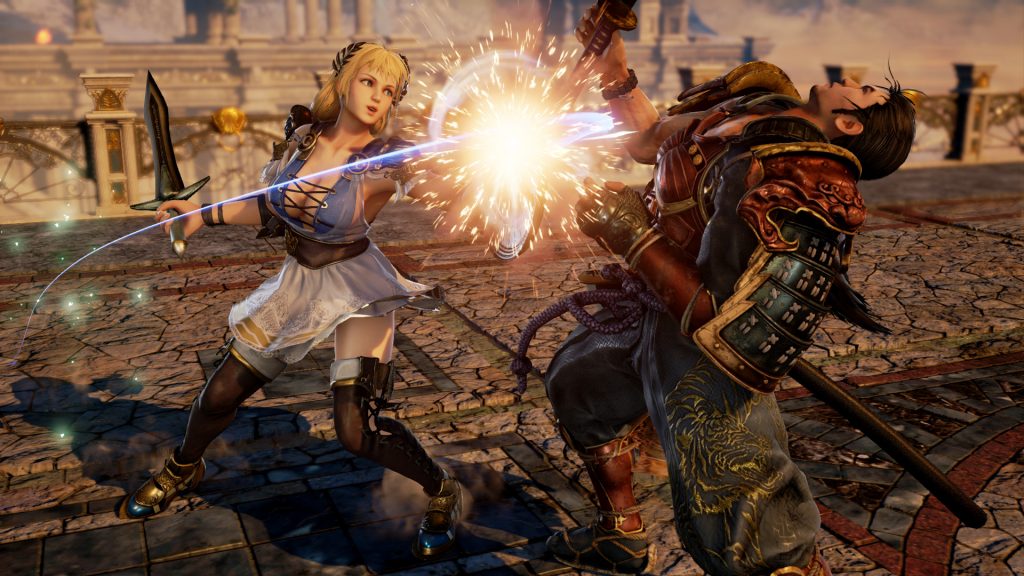

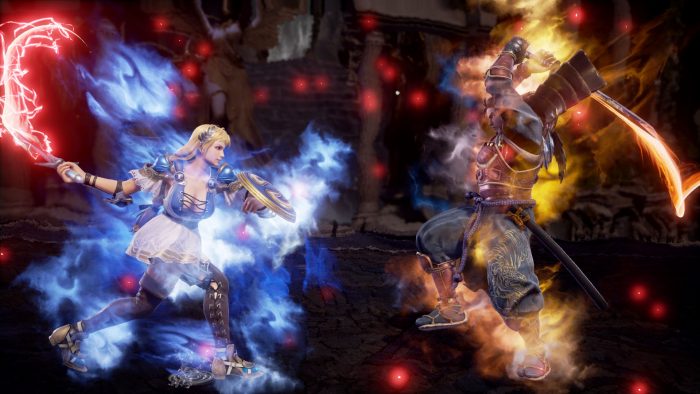

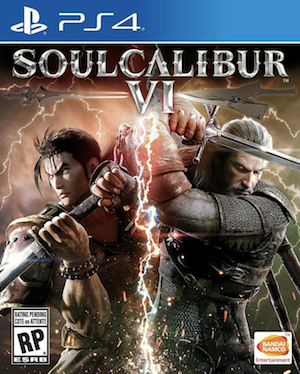


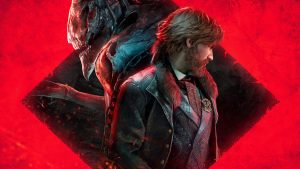
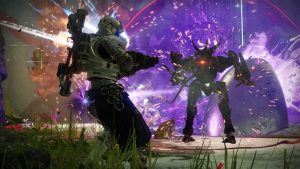
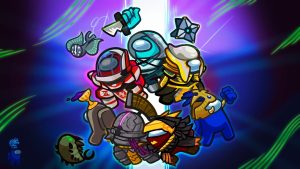
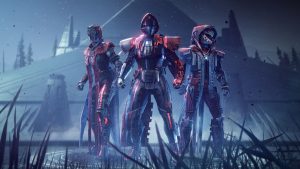

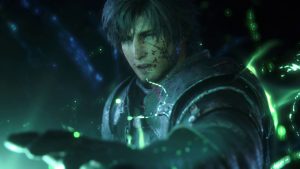
Share Your Thoughts Below (Always follow our comments policy!)